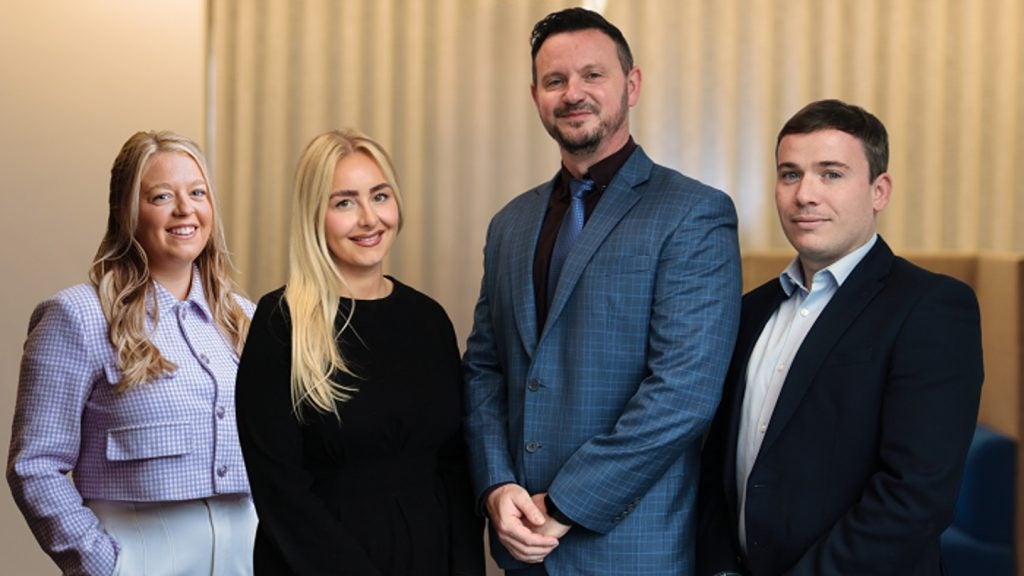Lessors need to keep
moving if they want to stay on top in the IT market. Vicky Meek
writes.

A constant stream of
innovations means that the IT industry has always been fast-paced
and lessors in the sector have had to keep up or lose out. But
increased demand for new technologies is now prompting a wholesale
change in the way business is being written.
While IT may be an essential
item for businesses, many have made do with their existing
equipment over the last two years in an effort to contain costs,
according to many lessors specialising in this area. Figures from
the UK’s Finance and Leasing Association bear this out.
In 2010, the IT equipment
leasing market shrank by 19%, while other some areas increased –
business equipment finance was up 7%, for example.
Yet IT equipment has a short
lifespan and many businesses are now in a position where they have
extended the terms of their existing leases, but risk being left
behind by competitors with more lean systems.
How well do you really know your competitors?
Access the most comprehensive Company Profiles on the market, powered by GlobalData. Save hours of research. Gain competitive edge.

Thank you!
Your download email will arrive shortly
Not ready to buy yet? Download a free sample
We are confident about the unique quality of our Company Profiles. However, we want you to make the most beneficial decision for your business, so we offer a free sample that you can download by submitting the below form
By GlobalData“A lot of companies are now
realising they need to improve their data management,” says
Jonathan Aylwin, international programme manager in the high tech
division at SG Equipment Finance.
“And, while it may seem
obvious not to invest in IT during a downturn, if there are savings
to be made and efficiencies to be had, it makes sense to
upgrade.”
Older equipment is also much
more expensive to keep going.
“If the thought of being left
behind is not significant enough, there are cost implications of
keeping outdated IT equipment,” says Ian McVicar, managing director
of Lombard Technical Services.
McVicar points to research
carried out by Wipro that found the cost of maintaining a
four-year-old PC was 59% higher than in its first year. He adds
that wiping a virus from a five-year-old PC is twice that of a PC
that is just a year old.
After a lean period, demand
is starting to pick up. The FLA reports that IT equipment leasing
business was up 29% in January 2011 over the previous year. And
lessors paint a similar picture.
“From mid-2008, companies
started delaying any non-essential investment in IT and that
continued until late last year,” says McVicar.
“As a result, we are now
seeing customers five to six years into a normal three to four-year
refresh cycle. There is pent-up replacement demand and we are now
starting to see this come through.”
Steve Russell, sales director
at Bluestone, agrees.
“Over the last few years, in
the teeth of the recession, many businesses chose to sweat their
existing assets much longer than normal,” he says.
“But you can only hold your
breath for so long and we are increasingly seeing organisations in
both public and private sector undertake large IT projects, not
just run-rate renewals.”
Data centre
demand
Some of this new demand is
for traditional PCs, driven in part by new operating systems, such
as Windows 7.
While this has been out for
some time, many businesses were waiting to see what the reviews of
this were like and, having found them favourable, are now
switching. This requires a PC upgrade in most cases, say
lessors.
“While clients have been
deferring refresh programmes by around a year, they are now ready
to move on to Windows 7,” says Jon Davies, UK director at 3 Step
IT.
“Many missed out on Vista and
so will need new system requirements to run Windows 7.”
Yet, while many businesses
have been out of the market, technology has shifted and so, too,
has the focus of many lessors.
“You have to go where the
dollars are being spent,” says Chris Labrey, sales director, UK and
Ireland for ECS Econocom.
 “If you simply chase
“If you simply chase
desktops nowadays, you might find your market thinning
out.”
While some companies,
particularly those with a large number of remote workers still
favour full-power PCs with data and applications stored on each
unit, many are moving towards what’s known as thin clients –
lower-spec units that access data and applications that are stored
centrally and remotely, either by a third party or
privately.
While higher-spec PCs cost
upwards of £500, the ones used in this kind of system have price
tags of around £200, with capital being spent instead on servers
and storage.
“Expenditure is moving back
towards data centres,” explains Labrey.
“Historically, that was where
we had the majority of our business – in mainframes and servers –
until the high-powered PCs were launched. Now, we are reverting to
storage.”
McVicar adds: “There is a big
growth in data storage as companies, especially those in the
financial services industry, seek to comply with increased
regulation and cope with the exponential growth in the amount of
data that needs to be stored.”
Smartphones in
Davos
Cloud computing is another
buzz-word in the industry. It encompasses software as a service,
virtual data storage and managed service providers among other
things.
“Cloud computing isn’t a new
area, but it is one that is being talked about a lot,” says
McVicar.
“There are still concerns
around security and access, but there will be business written in
this area.”
Hand-held devices and other
mobile IT equipment are also increasingly important in the leasing
market, according to Labrey.
Indeed, the recent merger
between ECS and Econocom was partly predicated on Econocom’s focus
on what Labrey calls “intelligent objects”, such as iPads and
PDAs.
“These are not classic
computers. IT is moving away from keyboards and screens towards
more disguised computers,” he says.
McVicar adds: “At the World
Economic Forum earlier this year, a telling sign was the comment by
Kris Gopalakrishnan, chief executive of Indian technology company
Infosys, who noted that most business leaders at the Forum were
using smart phones and tablets, with laptops very much yesterday’s
kit.”
This shift is having
implications for lessors in terms of who their clients are and in
the way in which deals are being structured.
“There is a major trend
towards consolidating and strengthening systems,” says Aylwin.
“That means companies are looking for total solutions and so we are
often financing the IT services companies that provide these
services now rather than the end-users.
“This has an impact on risk
assessment, both direct and operational, and as a result SGEF is
constantly adapting its policies in order to meet the changing
demands of the market, and better to serve our vendor partners.” It
also means financing one, larger deal rather than several with each
client.
“As we move into areas such
as server farms and data centres, we’re finding that we’re not
doing as many multi-country contracts, but rather bigger, single
contracts,” adds Aylwin.
Remarketing
strong
Terms are also changing,
depending on the equipment. Thin client devices don’t need regular
upgrades because they access information that is stored remotely
and so they don’t need to become ever more powerful.
“On these, we are seeing
terms of four years rather than the more standard two or three
years for a PC,” says Davies.
On other equipment, customers
have simply found that they can extend terms without harming the
business.
 “Contracts used to
“Contracts used to
last for 36 to 42 months,” says McVicar.
“But as customers have
extended over the last two years and found ways of managing their
assets over a longer period, they are looking at longer terms, so
these have shifted more towards 42 to 48 months.
“The issue is that the
manufacturer’s warranty would normally last three years, so there
are additional costs involved in getting warranty extensions or
similar.”
Yet the trend towards
virtualisation makes financing some of the newer technologies less
straightforward. With hardware such as PCs, there has generally
always been a healthy secondary market for equipment, making
residual risk low and keeping pricing keen.
“We sell between 100,000 and
150,000 units a year on the secondary market,” says
Davies.
“Many of these go into the
education sector or for private use, with some exported. In fact,
we tend to see more demand from second users than we are able to
supply.”
However, with much higher
elements of service in today’s IT deals, and possibly less saleable
units being financed, residual values are likely to play less of a
role in structuring deals.
“Take, for example, a blade
server, which is a rack with, say, 20 blades in it,” explains
Labrey.
“After three years you would
discard the blades, which are worth nothing, but keep the rack. The
technology is becoming more throw-away, which means that we take a
different approach to residual values. We no longer use
percentages; we use absolute numbers, quoting what each unit is
actually worth.”

Innovation
calls
“The prevalence of cloud
computing, managed services, hosting on or off-site and the change
from proprietary networks towards data centres changes the game
from a financing point of view,” says Aylwin.
“Clearly, there still has to
be a solid base of technology to finance, but you also have to keep
in mind that new accounting standards may impact the treatment of
service packages.”
The changing technology is
causing a rethink among many lessors about the way in which they
provide finance to their customers. Davies talks of taking a more
“holistic” approach, using lifecycle management, refresh programmes
and a “wider service set”.
Labrey agrees.
“It is getting ever harder to
put in place a residual value on IT equipment and so the financing
vehicles are becoming less like classic leases and more like
managed service contracts with technology refresh options,” he
says. “This allows customers to manage their assets more
dynamically and it means we are seeing one lease rather than a
lease per project.
“It allows customers to sign
deals on a pay per use basis, for example.”
Overall, the developments in
technology mean that lessors are having to change the way they
write business and the prize of more business will go to those best
able to adapt and innovate.
“The rapid growth in cloud
technology and IT solutions migrating from traditional procurement
to managed service environments require our industry to remodel and
rethink how best to match our finance solutions to both the needs
of the customer and the structure of their investments,” says
Russell.
“Those lessors that are agile and strategic enough to
develop new products to match the changes in technology will be
those that lead the way in future years.”







